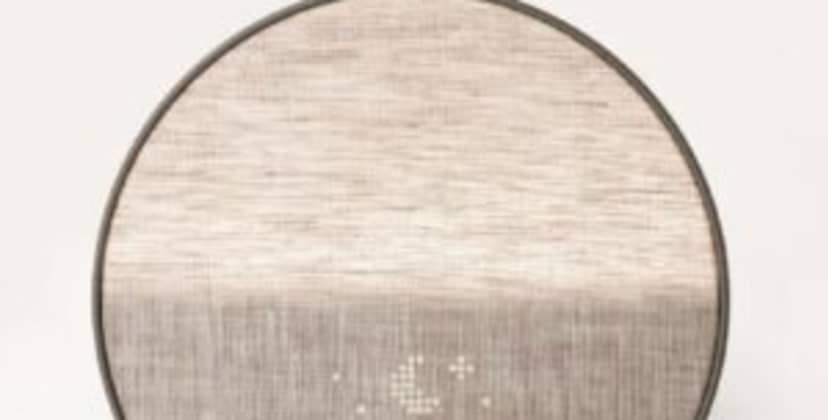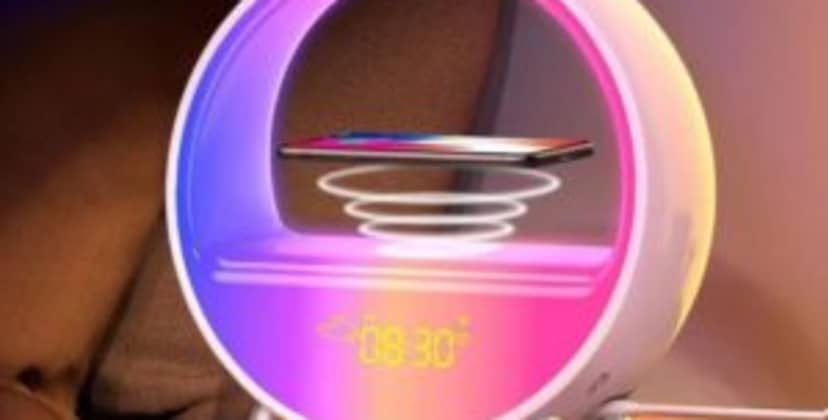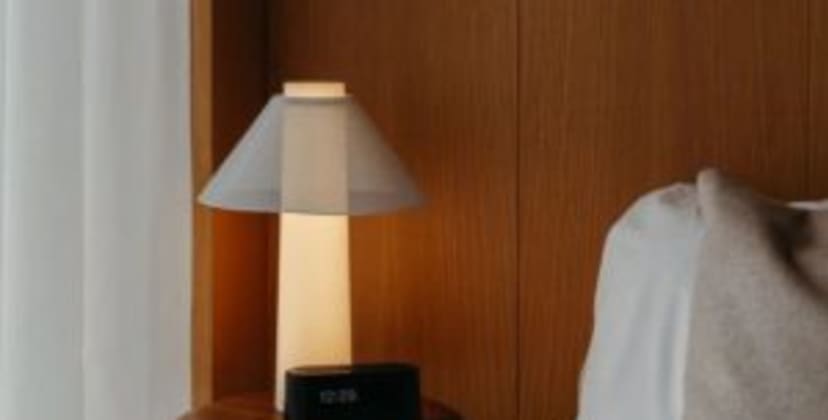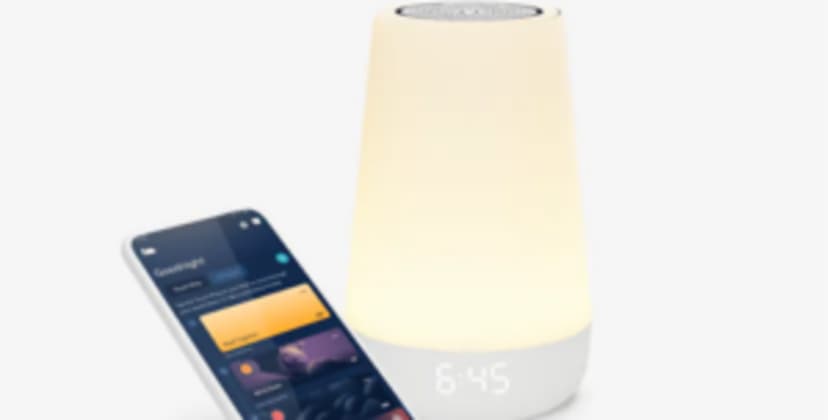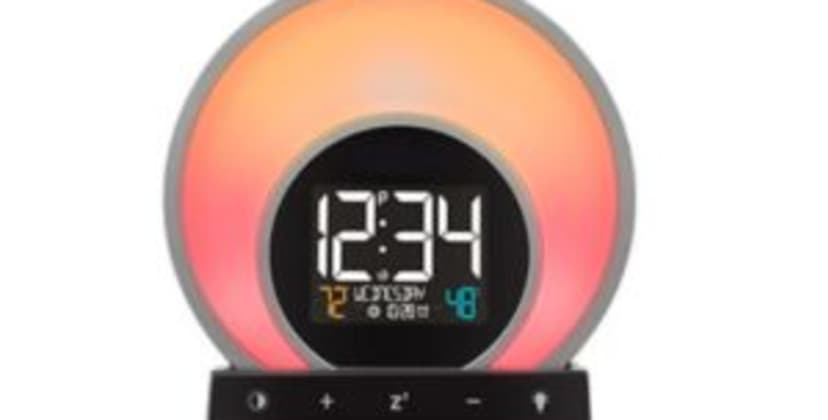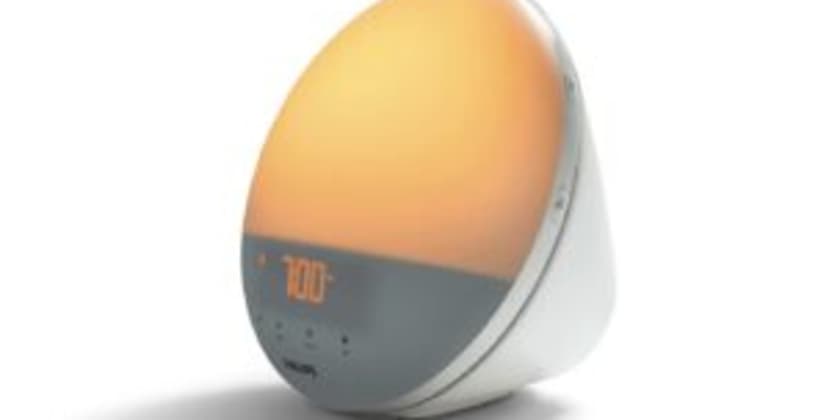When you buy through our links, we may earn a commission. Products or services may be offered by an affiliated entity. Learn more.
Best Wake-Up Lights
In recent years, wake-up lights have hit the market as a more natural alternative to traditional alarm clocks. By mimicking the sunrise, wake-up lights stimulate your visual senses with light that gradually increases.
Aside from their primary function, wake-up lights often come with a host of extra features that traditional alarm clocks may not provide. These may include wind down programs, smart home integration, and reading light modes. Some wake-up lights have a sound option that serves as an additional alarm.
We’ll highlight the best wake-up lights on the market. To help you make an informed decision, we’ll break down each product’s individual features and other important considerations to keep in mind when shopping.
Top Picks Overview
In-Depth Reviews
Best Overall
Hatch Restore 3
Use this SleepFoundation.org link for the most current discount on Hatch products
Shop Now
Price
$170
The Hatch Restore and Restore 2 have earned a dedicated following over the years from fans of wake-up lights. With the Restore 3, Hatch builds on the original designs with more enhanced colorization for the sunset and sunrise programs, additional audio options, crisper sound, and a subscription option for accessing additional content. Despite these changes, the Restore 3 retains the user-friendly design and everyday practicality that earned its predecessor such a dedicated following.
The wake-up light gradually brightens to mimic the natural sunrise, using a wide array of colors to achieve the intended effect. This helps you start the day feeling refreshed, and should be less jarring than using a traditional alarm clock. If you need auditory assistance when waking up, you can choose from 10 sounds to accompany the brightening light. Likewise, the sunset program dims to darker shades to calm you as you fall asleep.
The Restore 3’s built-in library includes 21 different programs, including white noise and ambient sounds. For more options, you can sign up for the Hatch Sleep Membership. This optional subscription grants access to more content such as guided meditations and soundscapes. The Restore 3 features three separate speakers, resulting in high-quality playback to enhance your listening experience.
For such an advanced device, the Restore 3 is remarkably simple to operate. Two large buttons let you activate the sunrise and sunset programs, and a third button toggles the alarm on and off. Soft linen covers the display, and you can choose from three colors for the back panel. Standard ground shipping is free of charge, and your purchase comes with a 60-night trial. The Hatch Sleep Membership also comes with a 7-night trial for monthly subscribers, and a 1-month trial for annual subscribers.
Best Value
Dekala Arches
Use this SleepFoundation.org link for the most current discount on Dekala products
Shop Now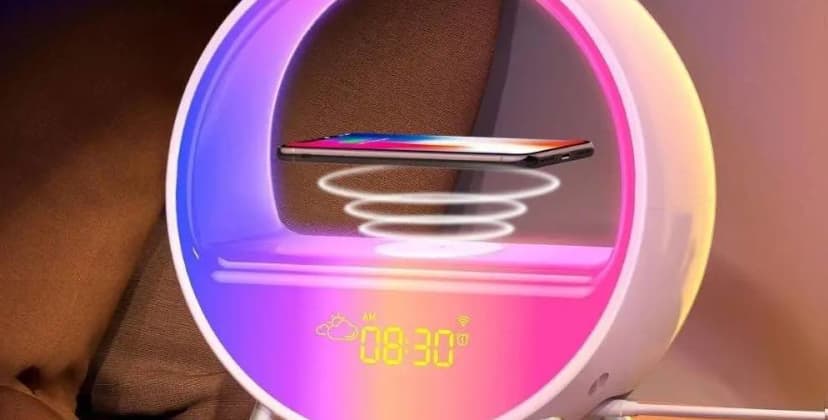
Price
$130
Some of the more advanced wake-up lights on the market carry steep price-points reflective of their high-tech designs. With the Dekala Arches, you’ll get a smart device loaded with cutting-edge features, but affordable pricing ensures most shoppers won’t encounter any sticker shock. The Arches is engineered to mimic the light patterns of a natural sunrise each morning with a range of 10 to 60 minutes. You can also dim the device at night to keep your bedroom dark.
The progressive sunrise alarm mostly consists of orange and yellow shades. The device’s built-in audio library includes eight programs, including nature sounds, ambient noise, and white noise. A charging station also allows you to power up your phone overnight. Standard devices come with 2.4G wi-fi compatibility and access to Alexa or Google Home Assistant, but you can upgrade to 5G for an additional fee.
Using the Dekala app – which is free to download – you can use voice controls to adjust the Arches. The device is available through Amazon at an exclusive price-point for Prime members.
Best Design
Loftie Lamp
Use this SleepFoundation.org link for the most current discount on Loftie products
Shop Now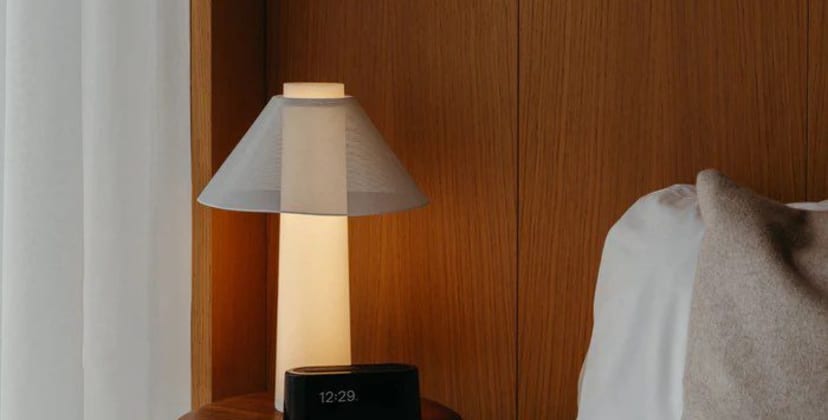
Price
$275
The Loftie Lamp is a stylish wake-up light that will heighten the decor in any bedroom. The simple, modern design has a minimalist aesthetic and emits a gentle glow conducive to restful sleep.
The lamp is composed of a polycarbonate base and a perforated steel shade. Light emits from the lamp’s base to create a warm, gentle glow. A preset sunset option gradually dims the lamp at bedtime, allowing calming colors to gradually recede. For the sunrise option, a soft colorful glow travels up the base of the lamp to mimic a gradual sunrise. You can also set the lamp to “breathe” light, dimming and brightening in a rhythmic pattern meant to relax you, or you can manually adjust the light to your preferred brightness.
The base has a 4-inch diameter and the shade measures 11.5-inches at its widest. The lamp is Wifi-enabled so that you can operate it remotely, or you can adjust the light with a small button in the base. You may pick between a white or black shade.
Loftie ships the lamp for free within the U.S. You may return the lamp within 60 days, and the lamp is backed by a 1-year warranty.
Best for Kids
Hatch Rest 2nd Generation
Use this SleepFoundation.org link for the most current discount on Hatch products
Shop Now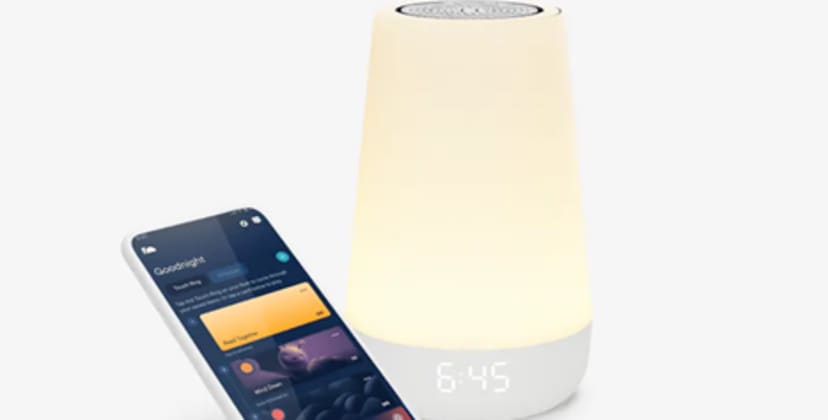
Price
$60
The Hatch Rest 2nd Generation packs a host of features into a kid-friendly bedside light. With a range of functions, parents and caregivers can use the Rest 2nd Generation in numerous ways as their child grows.
The device is compact and lightweight, allowing it to fit easily on a small table or nightstand. It can be used as a wake-up light with a dimmable LED clock and multiple colors. It can be controlled remotely via WiFi and programmed to give children time-to-rise cues that guide them toward staying in bed until the appropriate time.
The Rest 2nd Generation also works as a sound machine with over 18 sounds, including white noise, lullabies, and rain. Parents can program the device to initiate a series of lights and sounds every night at the same time, creating cues to help a child understand that bedtime is approaching.
Hatch ships the Rest 2nd Generation for free and gives you a 30-night, risk-free trial to test out the device. Hatch also includes a 1-year warranty against defects. Your purchase comes with a 1-month membership to Hatch+, which provides additional content like bedtime stories and music.
Best Reading Light
Sharper Image Circadian Rhythm Clock
Use this SleepFoundation.org link for the most current discount on Sharper Image products
Shop Now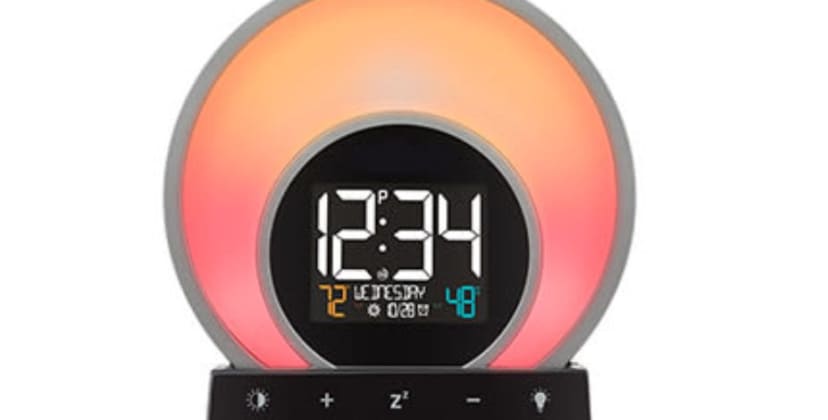
Price
$80
The Sharper Image Circadian Rhythm Clock integrates sleep science and cutting-edge technology to help you get enough rest and wake up in the morning. The clock’s display is designed to gradually become dimmer in the evening, which mimics natural light settings at dusk. The circadian rhythms that guide our sleep cycles are heavily influenced by light and darkness, so the dimming can help you relax and prepare for bed. The light also brightens in the morning for a simulated sunrise effect.
The clock is highly customizable. In addition to the standard evening setting, you can choose from four other light modes. The cycle mode slowly progresses through the clock’s 20 color options, select mode lets you choose one fixed color, and meter mode changes color depending on your home’s indoor humidity level. The clock also features a guided breathing program, during which you’ll inhale and exhale when the colors shift. The LED display features temperature and humidity readings, as well.
In addition to programming times for dimming and brightening to begin, you can activate the alarm for Monday through Friday, weekends only, or every day. For those who need an extra nudge out of bed in the morning, the clock has a snoozable melodic alarm that gently increases in volume over a 5-minute period. Other features include a USB port for charging your phone and a built-in backlight. You can program the clock in English, French, German, and Spanish.
Sharper Image has a reputation for high-end tech products, but the Circadian Rhythm Clock’s price-point is quite low given its functionality. Standard returns are permitted within 60 days of purchase, and the company extends the return window for items bought between late October and Christmas Eve.
Best Personalizations
Phillips SmartSleep Wake-Up Light
Use this SleepFoundation.org link for the most current discount on Philips products
Shop Now
The Philips SmartSleep Wake-Up Light offers a personalized experience that includes more than 20 brightness levels for the sunset and sunrise simulations. If you’re a heavy sleeper who has a hard time waking up in the morning, you can program the light for one of the brighter settings to ensure you won’t sleep in too late. You can also opt for a softer setting if you typically get up on time. For an extra nudge, the light is equipped with five soothing wake-up sounds.
Audio options also include full FM radio playback, so you can listen to your favorite music or spoken-word programs as you fall asleep. The radio can also be programmed as your alarm. The snooze is simple to activate — lightly tap the top of the light, and the alarm will sound again in 9 minutes.
The SmartSleep Wake-Up Light carries a reasonable price-point compared to comparable bedside devices. If your budget is flexible, you can also upgrade to a SmartSleep model with more advanced features such as device charging ports and a built-in sleep environment tracker. Trial periods vary by retailer — Amazon’s runs for 30 nights — but Philips backs all wake-up lights with 2-year manufacturer’s warranties.
What Is a Wake-Up Light?
A traditional alarm clock uses sound to wake you from sleep, but this can be overly jarring for some. In recent years, wake-up lights have become an increasingly popular alternative.
Instead of relying solely on sound, wake-up lights simulate the sunrise by slowly brightening over a period of time. By doing so, they’re able to wake you up more gradually than a traditional alarm. The duration of the sunrise simulation varies across models, as does the range of colors.
As with traditional alarms, most wake-up lights provide a built-in alarm that can be set for a specific time, regardless of the sunrise time in your area. Many models also come with a sunset mode to help you prepare for sleep.
Additionally, wake-up lights often include sound options. In keeping with the natural theme, these sounds tend to include birds chirping, waterfalls, or other ambient noises.
How to Choose a Wake-Up Light
When choosing a wake-up light, shoppers may want to compare features and settings to find the right fit. Each wake-up light serves largely the same function, but certain variations and additional features may appeal to specific users.
We’ll cover the most common variations between models, including wind down features, overall value, style, and smart home integration.
What to Consider When Purchasing an Wake-Up Light
With so many options on the market, it’s important to know how wake-up lights are different from one another in order to find one that suits your individual needs.
To help you make an informed purchase, we’ll highlight the top features you’ll want to consider when buying a wake-up light.
Wake-Up Features
Wake-up lights often differ in terms of available features and settings. While some lights simply get brighter, many wake-up lights simulate the colors of the sunrise.
To accompany the light alarm, wake-up lights may include a traditional auditory alarm with natural sounds or FM radio.
Wind Down Features
In addition to sunrise settings, some wake-up lights include sunset simulation. By dimming gradually and changing colors, this function helps users wind down before falling asleep. Wind down features may also include soothing, natural sounds or meditations.
Battery Backup
Many wake-up lights are AC- or USB-powered. Some will include a backup battery to ensure that the light still works in the event that power is lost. This provides users with additional peace of mind. The backup battery is typically not intended to be the primary power source, and it should be replaced regularly.
Value
Value is an important consideration for shoppers, and most will want to compare the cost of a wake-up light with the features it provides. Some shoppers may justify a higher price-point for a wake-up light that includes additional options like smart home integration or wind down settings. Others may want a simpler design that does not warrant a high price.
Smart Features
It’s becoming more common for household objects to feature smart home integration, and wake-up lights are no exception.
While many wake-up lights are compatible with Amazon’s Alexa and Google Home, it’s not unusual for a manufacturer to provide its own app or premium service. Using these smart devices, wake-up lights can often be programmed and controlled from outside the home or by voice.
Style
Each wake-up light has its own shape, colors, and style. While not every wake-up light’s design may cater to your personal taste or fit in with your bedroom decor, there is a wide selection to appeal to a variety of shoppers.
Along with wake-up and wind down color changes, some wake-up lights allow for multicolored lighting. This could allow a light to fit a room’s color palette closely, or appeal to those who want a customizable option.
Display
Many wake-up lights include a digital clock. Others may display additional information or feature a functional touchscreen. Some displays may also have a night mode or turn off completely in order to not disturb sleep.
Other Features
In addition to some of the more common features, wake-up lights may come with sleep stories or guided meditations, which can be used alone or in conjunction with other wind down features. Dedicated reading light and night light modes are also included in some models.
When it comes to wake-up or wind down sounds, some wake-up lights pair with an app and include the ability to download more options as they become available.
Since a wake-up light differs from a traditional alarm clock, shoppers may have additional questions when shopping. We’ll cover some of the most frequently asked to give you a better idea of what to keep in mind before making a purchase.
Frequently Asked Questions
How do sunrise alarms work?
Sunrise alarms wake you up with light that gradually brightens, rather than using a loud noise like a traditional alarm.
Your vision is stimulated by the wake-up light’s sunrise settings. With some wake-up lights, natural sounds or the radio can accompany the change in light.
Are wake up lights good for you?
Wake up lights can be considered a more natural alternative to traditional alarms. Exposure to light is one of the most important factors for your circadian rhythm, which dictates your ability to fall asleep and wake up at regular times.
By simulating the sunrise with a gradual increase in brightness, this type of alarm wakes you up gently.
What is the best color light to wake up to?
To simulate the sun’s brightness, most wake-up lights are yellow. This energizing color is one that your body is naturally inclined to associate with morning.
Colors like purple and red are often used for simulating the sunset, and may be more conducive to falling asleep.

Still have questions?
Our product experts have extensive experience testing just about every sleep product on the market.
Send an email to AskAnExpert@sleepfoundation.org with your questions and we’ll help you find exactly what you’re looking for.

